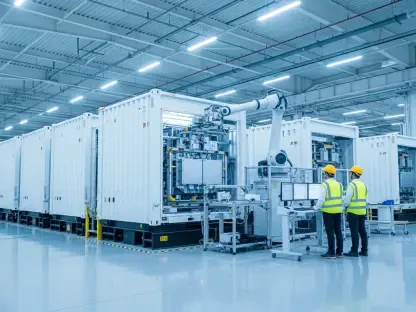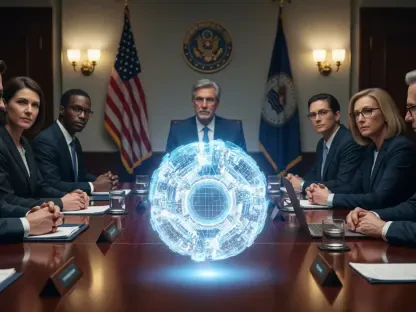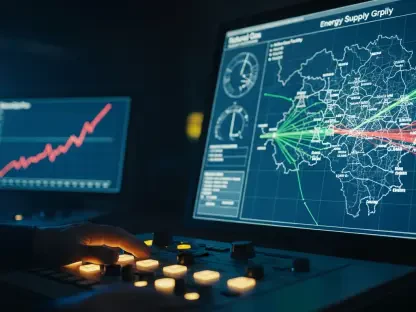In an era marked by shifting global dynamics, the United States and Saudi Arabia find themselves negotiating a potential civil nuclear cooperation deal that has far-reaching implications. These discussions are unfolding amidst multifaceted challenges, including regional security concerns, technological interests, and the broader geopolitical landscape of the Middle East. Central to these negotiations is Crown Prince Mohammed bin Salman’s Vision 2030, which aims to diversify Saudi Arabia’s economy by reducing its reliance on oil, a crucial element of Saudi Arabia’s energy strategy in a region dealing with complex international relationships.
The Strategic Aims of Saudi Arabia’s Nuclear Program
Economic Diversification and Energy Transformation
Saudi Arabia’s drive to develop a civil nuclear industry is intrinsically linked to Crown Prince Mohammed bin Salman’s broader economic and environmental objectives. The Vision 2030 initiative seeks to transform the kingdom’s economy by decreasing dependency on fossil fuels and enhancing sustainability. By nurturing a domestic nuclear industry, Saudi Arabia intends to mitigate carbon emissions and conserve crude oil resources for export rather than internal consumption. Presently, Saudi Arabia’s energy production is predominantly fossil fuel-based, with a significant share coming from natural gas and oil utilization. During peak periods, such as summer months, these resources are heavily taxed to meet escalating energy demands. The integration of nuclear power offers a sustainable substitute, targeting energy-intensive sectors like water desalination and air conditioning facilities.
Furthermore, the kingdom’s desire to diversify its energy portfolio aligns with the global trend of decreasing carbon footprints. In a world steadily moving towards renewable energy forms, Saudi Arabia’s ambition to incorporate nuclear power is a natural progression that simultaneously promises economic benefits. Exporting preserved crude oil can potentially yield significant revenue, aligning with the broader economic growth principles outlined in Vision 2030. The strategy underscores a vital transition towards sustainable development while bolstering the nation’s economy through diversified energy avenues.
Security Concerns and Regional Implications
While the civil nature of Saudi Arabia’s nuclear aspirations is emphasized, the potential security implications cannot be disregarded, particularly in the volatile Middle Eastern region. Saudi Arabia has subtly indicated that should regional security threats escalate, especially concerning Iran’s nuclear advancements, it might reconsider its nuclear stance. This posture serves not just as a subtle nudge to Tehran but also as negotiation leverage in geopolitics. Concerns arise regarding Saudi Arabia’s intent on enriching uranium, a dual-use technology where peaceful nuclear energy generation coexists alongside potential military applications. Producing ‘yellowcake’ for domestic power usage and international export illustrates this duality.
The quest for a nuclear energy program raises important questions about the region’s delicate balance of power. While Saudi Arabia asserts civilian use, the underlying potential for military adaptation through uranium enrichment adds layers of complexity to international dialogues. This dual potential places pressure on global nonproliferation regimes, necessitating strict adherence to treaties like the nuclear Non-Proliferation Treaty (NPT). As a regional heavyweight, Saudi Arabia’s nuclear maneuvers are closely scrutinized by neighboring countries and major international powers alike. Addressing these security nuances is crucial to maintaining balance and preventing an arms race mentality from taking root in regional dynamics.
The Negotiating Table: Challenges and Prospects
Legal and Diplomatic Considerations
The idea of establishing a civil nuclear cooperation framework between the U.S. and Saudi Arabia involves navigating intricate legal agreements and maintaining international security standards. At the heart of this negotiation is the requirement to satisfy conditions under Section 123 of the U.S. Atomic Energy Act of 1954. This stipulates rigorous nonproliferation safeguards, which both prevent the misuse of nuclear technology and enforce compliance with congressional oversight. Such frameworks are designed to avert the possibility of nuclear weapons development, ensuring any collaboration remains strictly peaceful.
Diplomatically, this potential partnership offers the United States an opportunity to bolster ties with Saudi Arabia, reinforcing alliances crucial given the current geopolitical climate. It mirrors past endeavors to improve Saudi relations with key U.S. allies in the region, offering a blend of nuclear cooperation centered on civilian use alongside robust security assurances. However, the complex diplomatic landscape necessitates crafting agreements that articulate clearly defined boundaries of cooperation while vigilantly monitoring potential deviations toward military use.
Economic Opportunities and Technological Collaboration
A successful U.S.-Saudi nuclear deal paves the way for rich economic and technological exchanges, promising lucrative contracts for American nuclear firms in building and managing Saudi nuclear facilities. In addition to expanding U.S. market access, this partnership facilitates technological sharing, placing the U.S. nuclear industry in a favorable position on the global stage. Opportunities extend beyond immediate construction contracts; such collaborations potentially involve training, building infrastructure, and engaging in long-term technological exchanges.
For Saudi Arabia, tapping into U.S. expertise accelerates the kingdom’s nuclear infrastructure development. It aligns with its ambition to cultivate a high-tech economy powered by clean energy sources. Nevertheless, finding balance within these technological collaborations requires careful legal and operational agreements. Issues concerning the construction and management of sensitive structures, such as uranium enrichment facilities, must be addressed. Diplomatic resolutions to these nuclear intricacies will determine the extent and durability of this partnership, shaping the future of both nations in an era increasingly defined by clean energy transitions.
Looking Ahead: Uncharted Waters and Alternative Paths
Exploring Partnerships Beyond the U.S.
In the event that U.S.-Saudi negotiations falter, Saudi Arabia possesses several potential partners ready to advance its nuclear vision. Countries with robust nuclear capacities, including China, Russia, South Korea, and France, have indicated interest in Saudi Arabia’s agenda. Each brings unique technological capabilities and geopolitical motivations, influencing Saudi Arabia’s decision-making in its selection of a nuclear development partner. Partnering with alternative nations involves complex considerations around technology transfer, financial terms, and global geopolitical positioning.
These alternatives present a reminder of the competitive nature of international nuclear technology markets. As global powers vie for influence in the Middle East, Saudi Arabia stands in a favorable position to dictate terms reflecting its strategic preferences. The competition among these nations underscores the urgency of achieving an American-led agreement, thus reinforcing existing alliances. However, any potential collaboration would require addressing uranium enrichment controls and technology proliferation concerns to adhere to international commitments and mitigate security risks.
Addressing Regional Concerns and Crafting Future Relations
The geopolitical scope of Saudi Arabia’s nuclear endeavors naturally invites scrutiny from regional actors, particularly Israel. A close ally of the United States, Israel is intrinsically invested in ensuring that nuclear proliferation in its vicinity remains unchecked. The potential for Saudi nuclear capabilities, even if intended for peaceful uses, introduces new dynamics in long-standing regional equations. Israeli apprehension surrounding Saudi Arabia’s growing nuclear expertise calls for diplomatic initiatives balancing security interests with transparency in nuclear operations.
Looking ahead, the future of U.S.-Saudi nuclear talks encompasses bridging diverse interests while maintaining a commitment to global nonproliferation aims. Successful agreements must address these regional worries, establishing frameworks that foster mutual trust and sustained dialogue. These ongoing discussions could redefine Middle Eastern alliances and navigate a path towards energy sustainability intertwined with regional stability. As the world observes these intricate negotiations, Saudi Arabia’s nuclear aspirations hold the potential to influence a modernized energy tapestry across the globe.
Navigating a Complex Future
In a time defined by evolving global shifts, the United States and Saudi Arabia are in the midst of negotiating a significant civil nuclear cooperation agreement. This potential deal holds extensive implications for both nations and the broader region. These talks come as both countries face numerous complex challenges, such as regional security and technological interests, against the backdrop of the intricate geopolitical landscape of the Middle East. A pivotal aspect of these negotiations is Crown Prince Mohammed bin Salman’s Vision 2030. This ambitious plan seeks to diversify Saudi Arabia’s economic foundations, aiming to significantly lessen its dependence on oil, a fundamental component of the kingdom’s energy strategy. Vision 2030 is vital as it aims to steer Saudi Arabia through the complexities of international relationships prevalent in the region. As these negotiations progress, they reflect larger strategic interests and alignments, potentially reshaping bilateral ties and influencing Middle Eastern dynamics for years to come.









